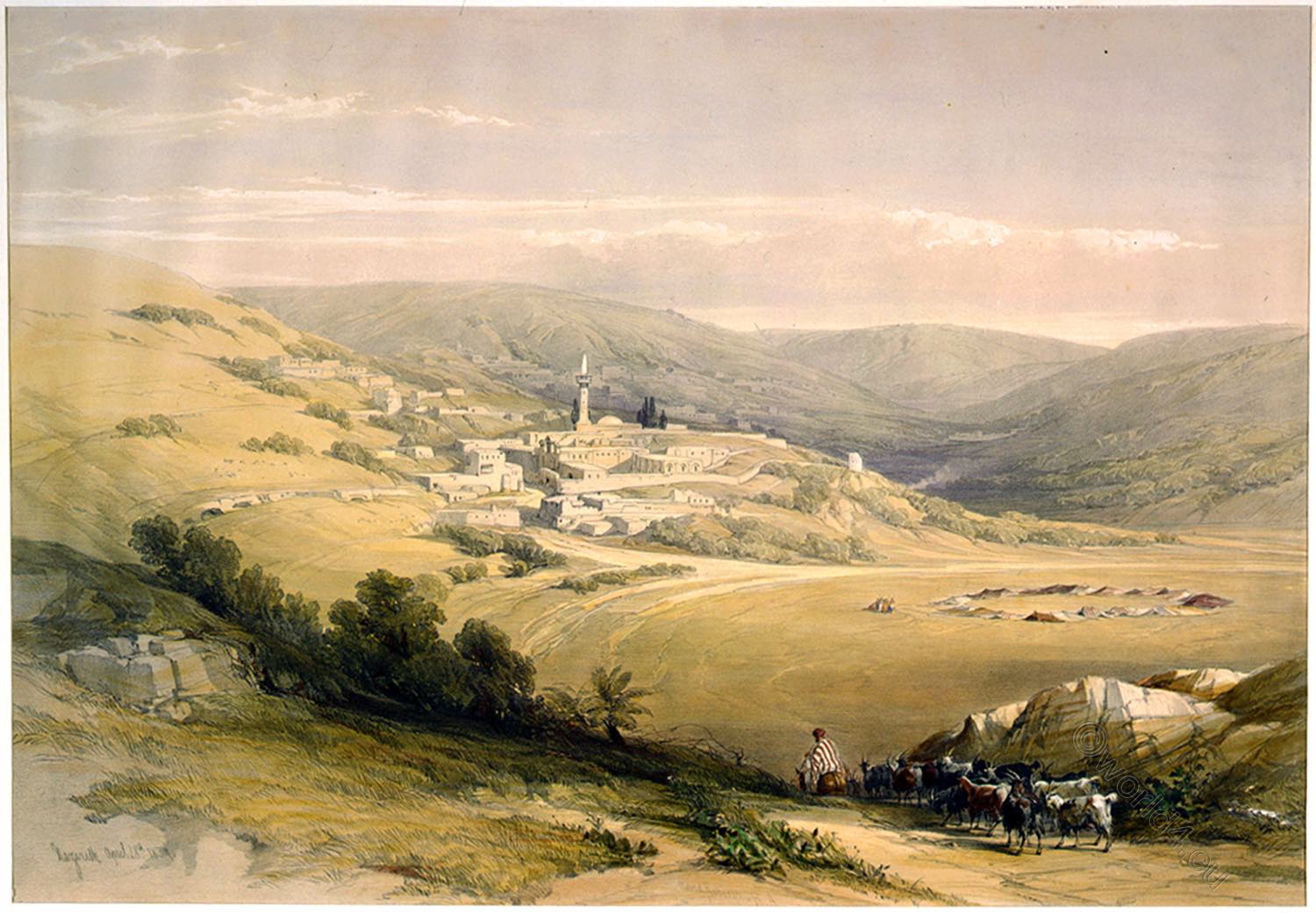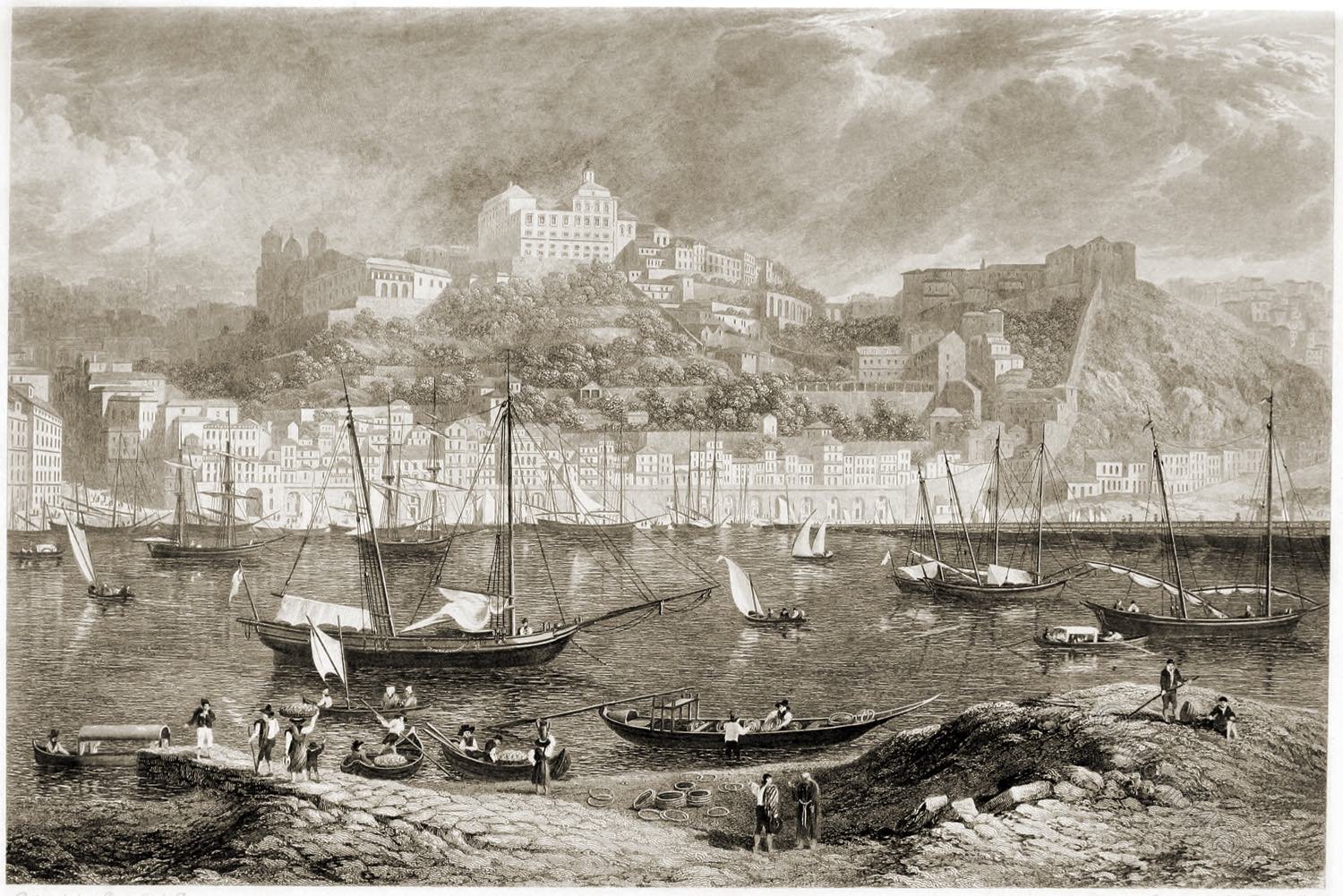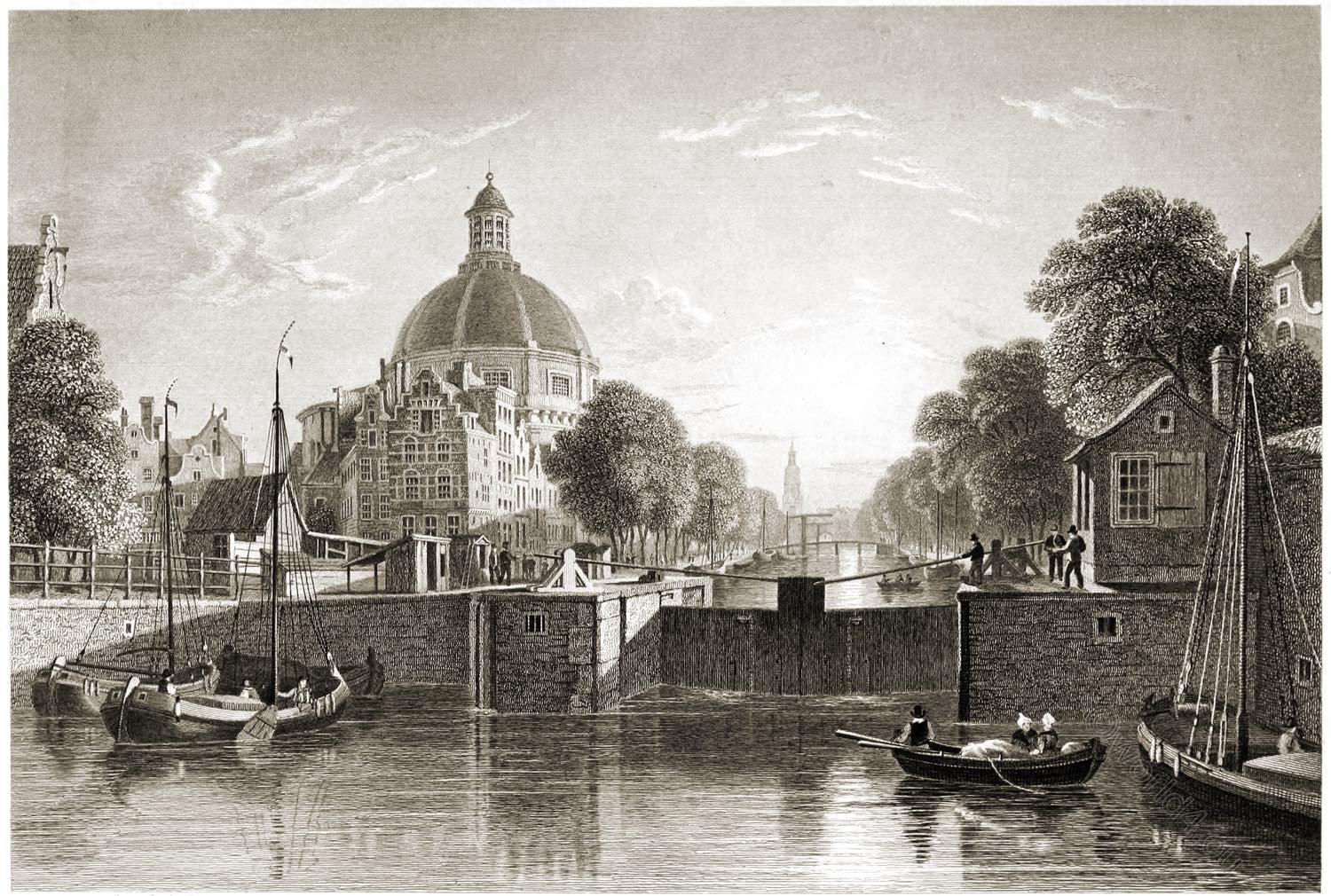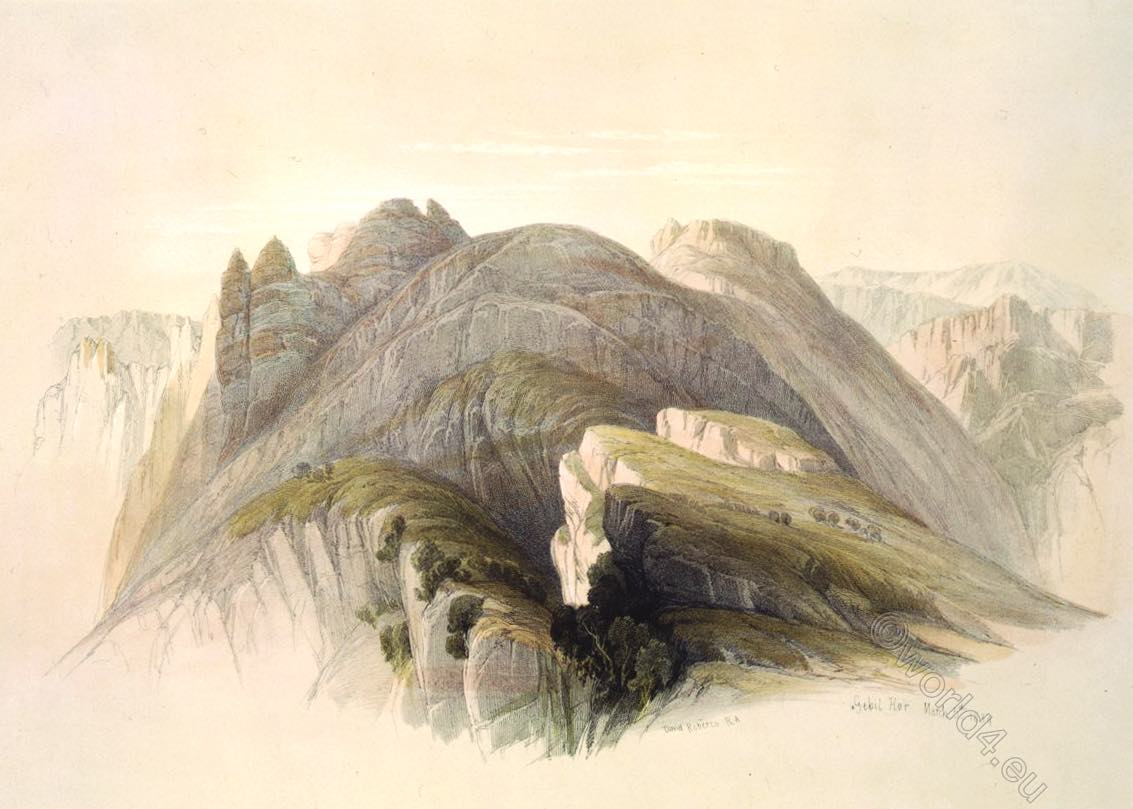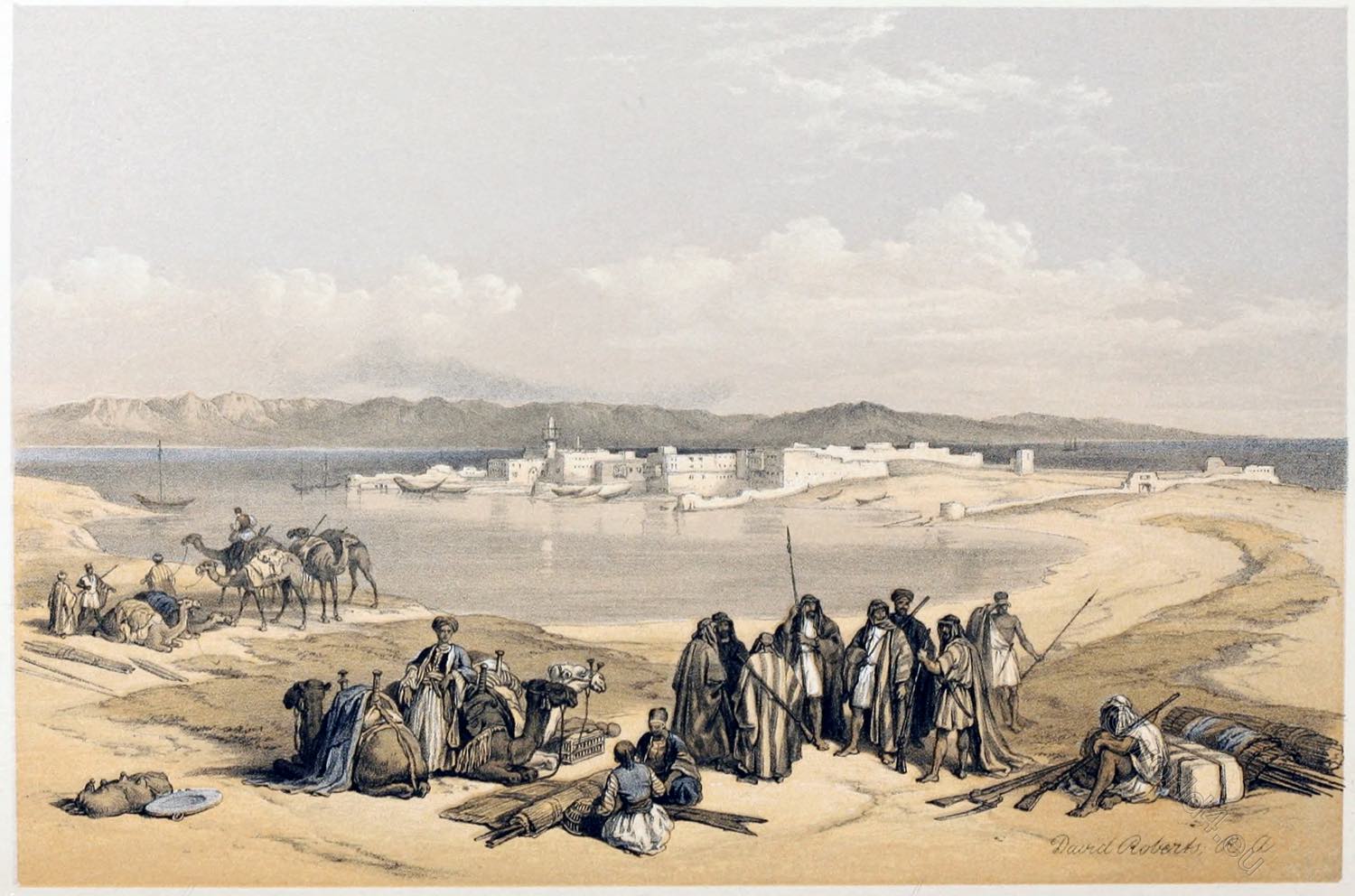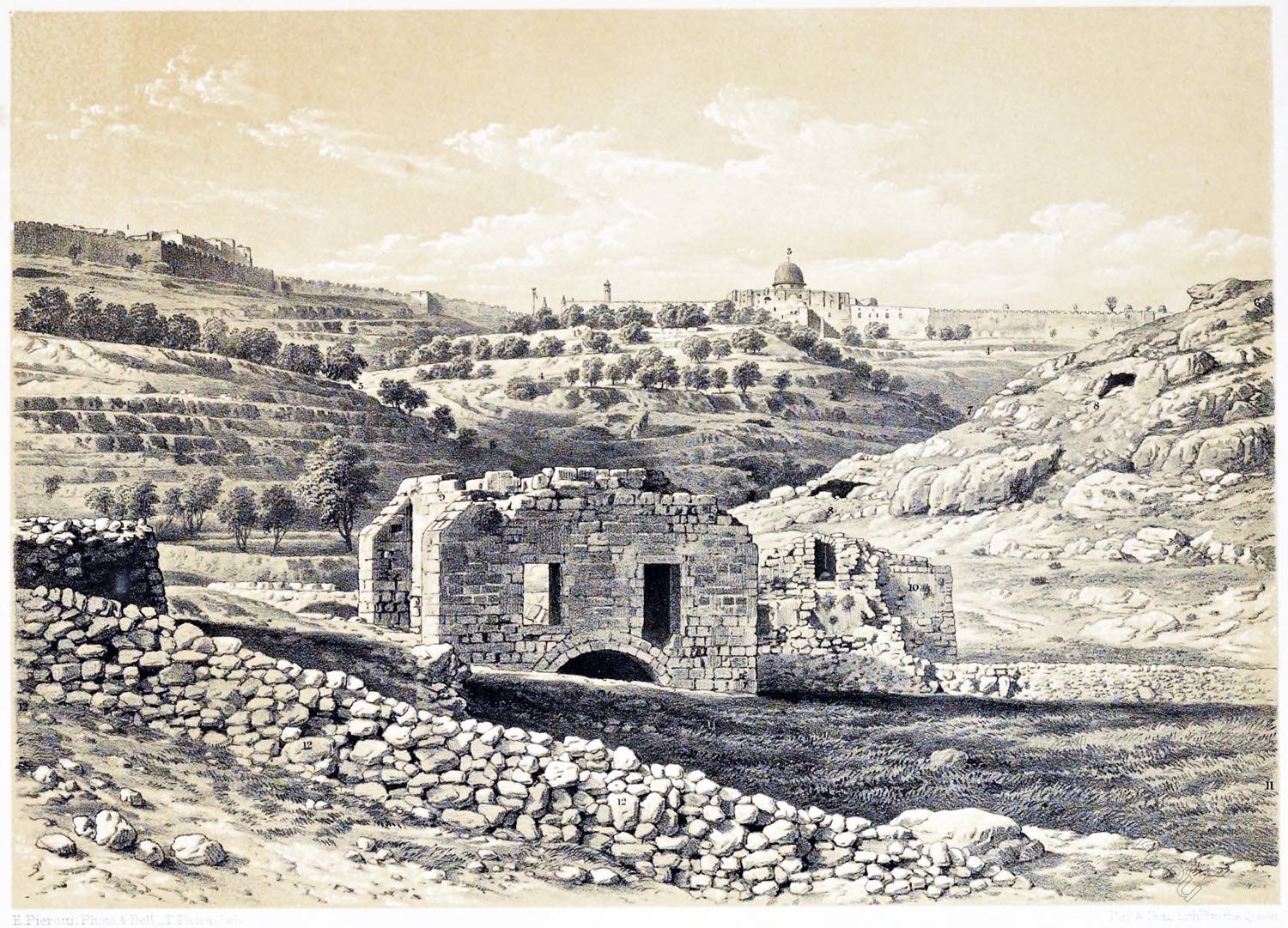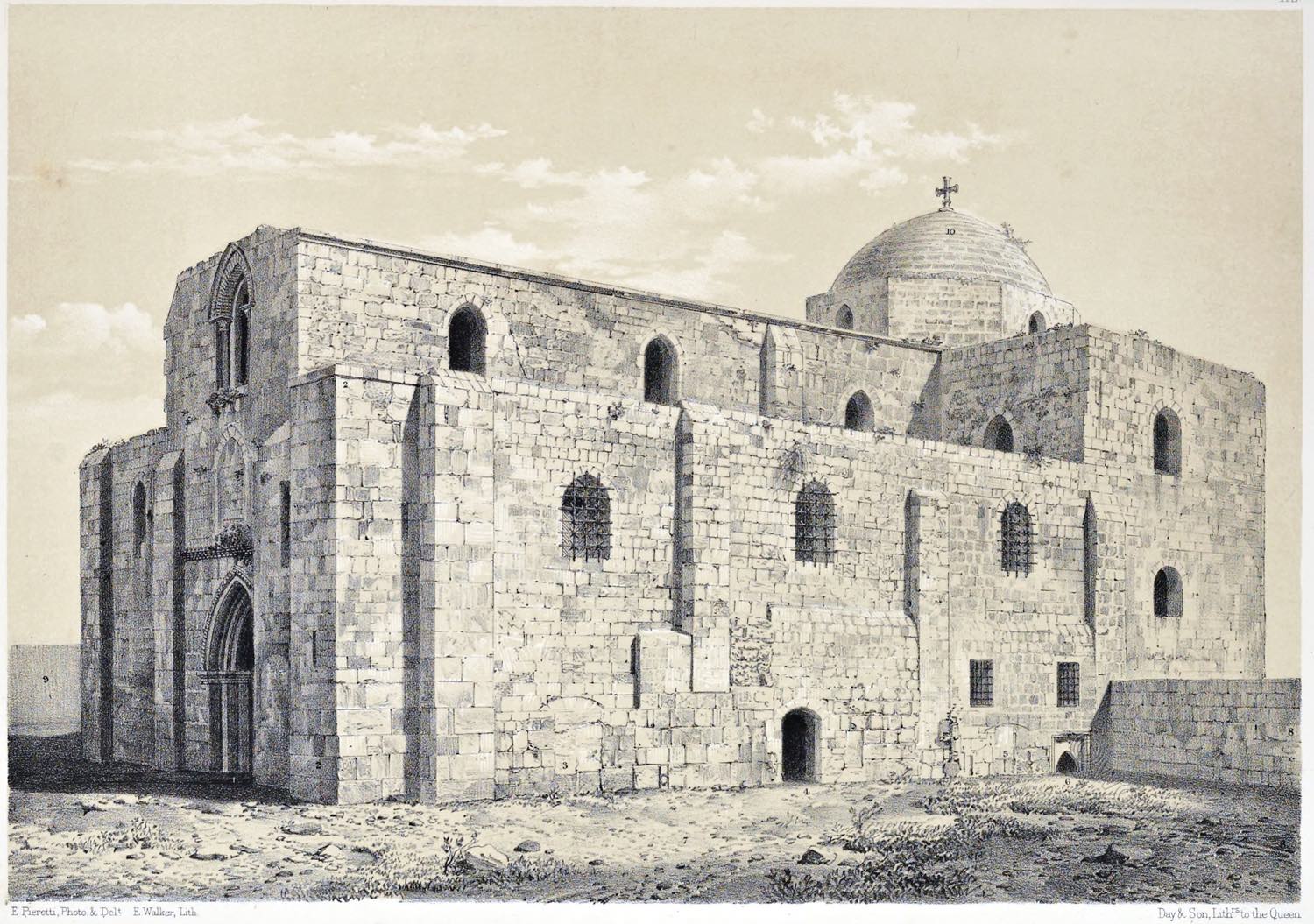
PLATE XL.
VIEW OF THE CHURCH OF S. ANNE. PROPERTY OF FRANCE.
- Principal Entrance to the Church.
- Remains of Minaret.
- Closed Door.
- Lateral Entrance.
- Closed Door.
- Ancient Window.
- Land, the property of the Church.
- Ruins of the Convent of the Sisters of S. Benedict.
- Continuation of Land the property of the Church.
- Dome of the Church.
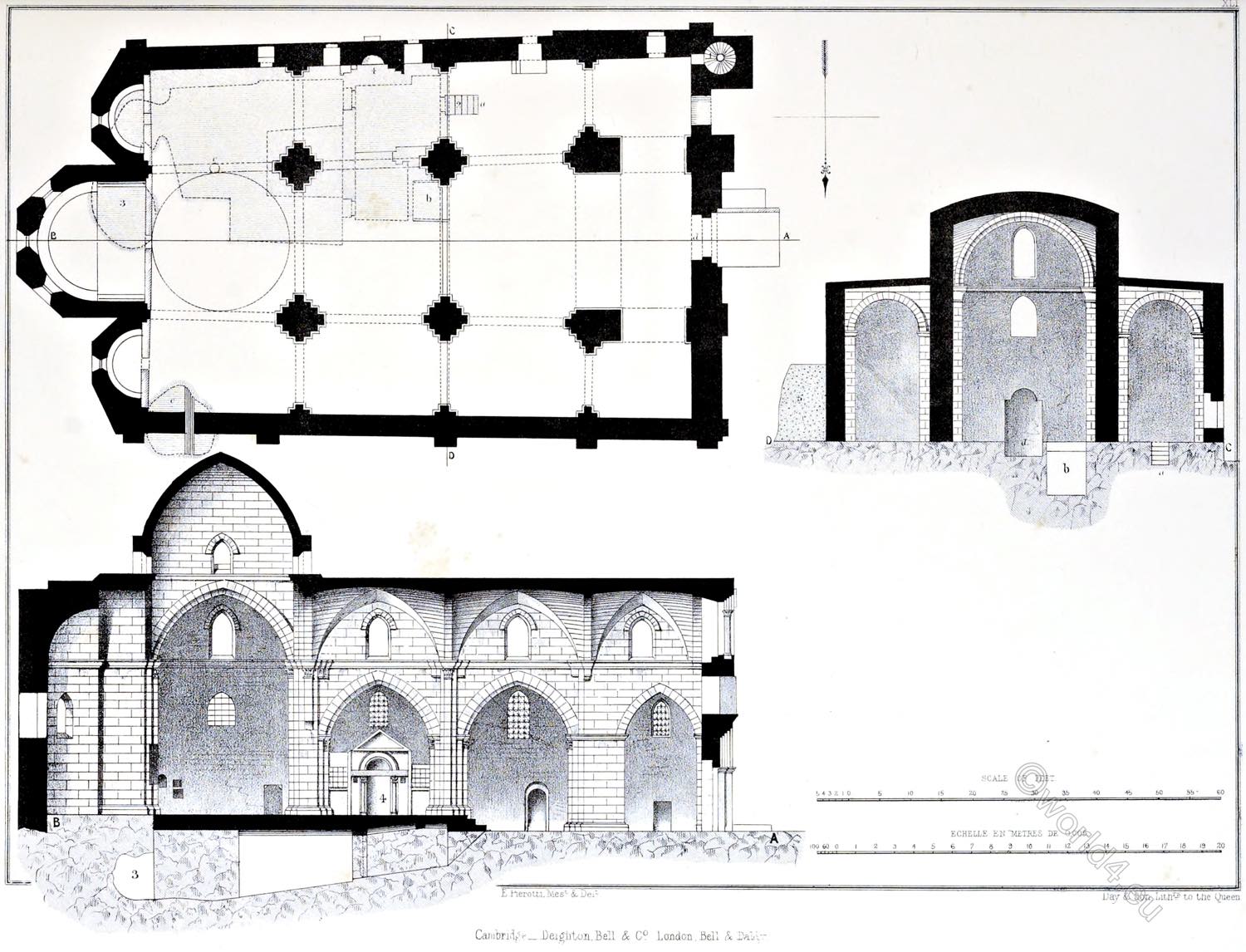
PLATE XLI.
PLANS AND SECTIONS OF THE FRENCH CHURCH OF S. ANN.
- Staircase to the Minaret.
- Staircase to the Subterranean Church,
- Traditional site of the Nativity of the Virgin Mary.
- Places of Prayer for the Mohammedans.
a. Stone Staircase.
b. Opening commanding a view of the Subterranean Church.
c. Small Opening.
d. Principal Entrance to the Church.
e. Ancient Cistern.
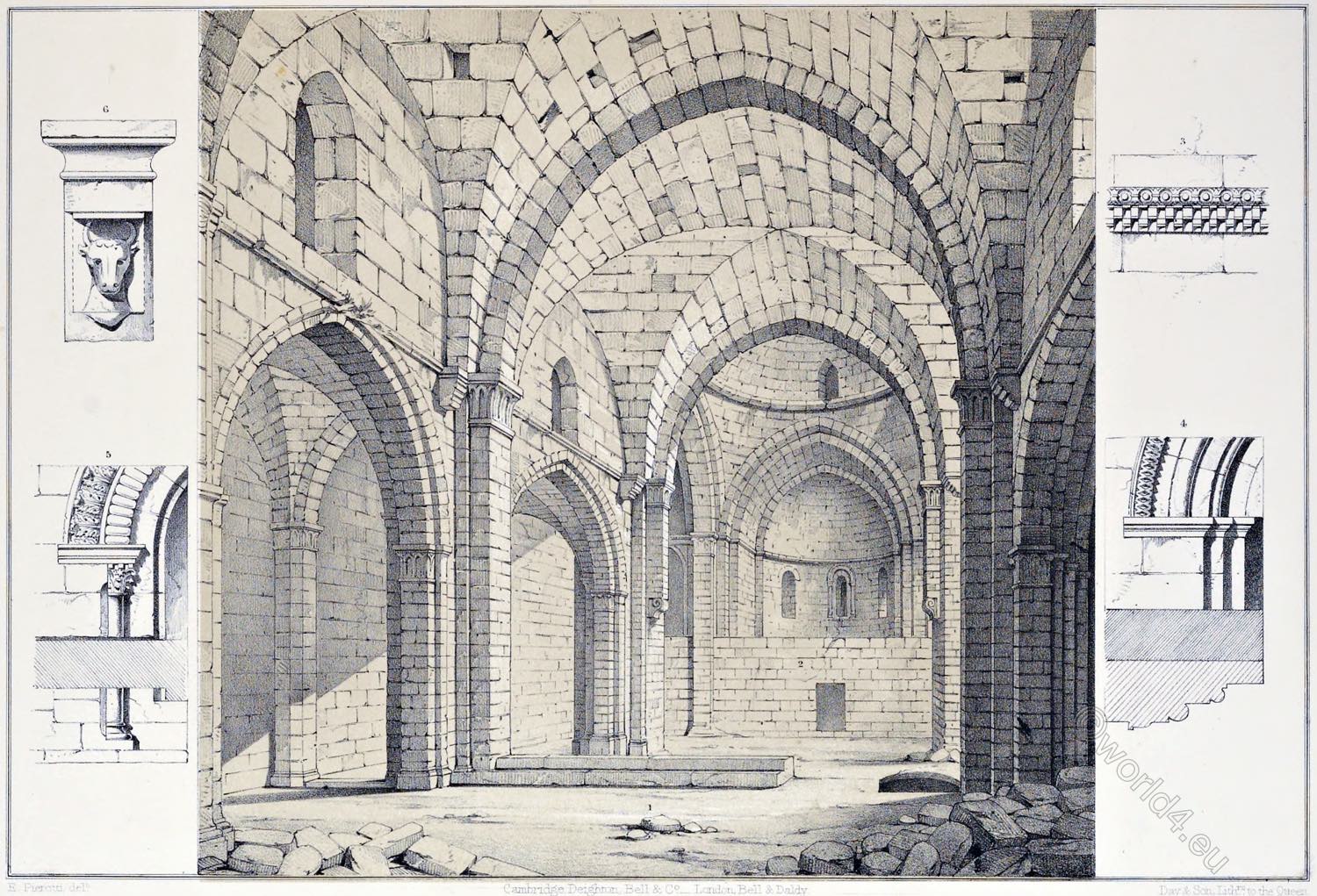
PLATE XLII.
INTERIOR OF THE CHURCH OF S. ANNE, AND FOUR DETAILS OF ORNAMENTATION.
- Interior of the Church of S. Anne.
- Modern Wall.
- Ornamentation of the Principal Front of the Church.
- Ornamentation of the Principal Entrance.
- Ornamentation of Window in the Principal Front.
- Capital in the Interior of the Church.
St. Anne’s Church is a church building in the Muslim quarter of the Old City of Jerusalem, located near the Lion’s Gate and next to the Pool of Bethesda (or the Probatic Pool), known in the New Testament because the evangelist John sets the first miracle performed by Jesus in Jerusalem, the healing of the paralytic, there. It has the title of basilica minor.
In the 5th century, the Byzantines (Aelia Eudocia) built a basilica dedicated to Mary in place of the Hadrianic Temple, near which, according to tradition, was the house of the parents of Jesus’ mother, Anna and Joachim. This basilica, like many others throughout Palestine, was destroyed during the Persian invasion in 614. The Crusaders built a small church on the remains of the Byzantine church. Like other Christian sites in Jerusalem, the Fatimid Caliph al-Hakim then had this church destroyed in 1009.
After the small church, the Crusaders built a new and larger sacred building by Avda, the widow of Balduin I, in a position slightly set back from the previous buildings next to Bethesda Pond. St Anne’s Church, built in 1140, is one of the few magnificent surviving remains of Crusader sacred buildings.
With the end of the Latin kingdom of Jerusalem, the church was converted by Saladin into a Koranic school (madrasa); it remained in Muslim hands until 1865 when, following the Crimean War, the Turkish Sultan Abdul Megid donated it and all its surroundings to the French government. Since then it has enjoyed a regime of extraterritoriality and since 1878 it has been run by the White Fathers.
These different building phases are all archaeologically documented: of the first-century pool, the waterproof plaster still survives; of the Byzantine church, there is a mosaic floor with carved crosses, a sign that it was built before 427 (the year in which Emperor Theodosius II. forbade the display of crosses on the floor to avoid trampling on the sacred Christian sign); of the small Crusader church there are clear traces in the mighty buttresses that still rest on the floor of the original pool.
The building has retained its original austere beauty to this day and is a testament to 12th century architecture, probably the finest surviving Romanesque church in all of Jerusalem.
In the right aisle, an exit leads to an underground grotto where, according to tradition, the birthplace of Mary, the mother of Jesus of Nazareth, is venerated.
On the gable of the church, an inscription in Arabic recalls Saladin’s transformation of the church into a Koranic school. The interior has three naves; on the two capitals of the columns next to the altar are carved the symbols of the evangelists Matthew and Luke. The crypt is built on top of ancient caves, one of which has been the site of the home of Joachim and Anne since Crusader times. The church has excellent acoustics and is known for its long-lasting reverberation.
Source: Jerusalem Explored. Being a description of the ancient and modern city, with numerous illustrations consisting of views, ground plans, and sections by Ermete Pierotti; translated by Thomas George Bonney (Fellow of St Johns College, Cambridge). London: Bell and Daldy; Cambridge: Deighton, Bell and Co. 1864.
Continuing

